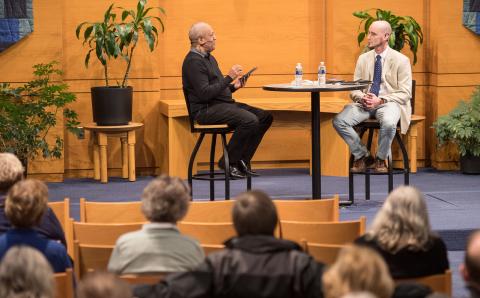How did urban sprawl get its start? What do walkable neighborhoods and mixed-use zoning have to do with loving our neighbor? Why should we care about the way our cities are built?
Lee Hardy, a philosophy professor at Calvin College, explores these kinds of questions in a compelling new book about urban design and city life. Thoroughly researched and rich with examples from dozens of places, The Embrace of Buildings reveals the author’s love of vibrant communities and good design—as well as his concern for economic justice and creation care. Readers will see the cities around them with new eyes.
The book looks at how 20th-century zoning and urban development trends shifted the focus—especially in the United States—from compact, inclusive neighborhoods to spread-out suburbs and exurbs. From public transportation and foot traffic to private automobiles. From engagement with neighbors to increased isolation.
Hardy argues for a return to walkable cities with shared public spaces.
Perhaps it’s time, he says, “to rediscover the virtues of urban neighborhoods, to recognize their unique features and assets, to appreciate their social and cultural diversity, even to consider dwelling in them and trying to make them both good and affordable places for others to live.”
Using stories from cities like Seattle, New York, and Hamilton, Ont., Hardy paints a convincing picture of what can happen when citizens—and churches—work to (re)claim their communities for the common good.
Readers can bring the text to life by scrolling through an online companion to the hard copy—a chapter-by-chapter collection of photos and drawings that illustrate the book’s themes and examples. (Calvin College Press)
About the Author
Eve Clayton








